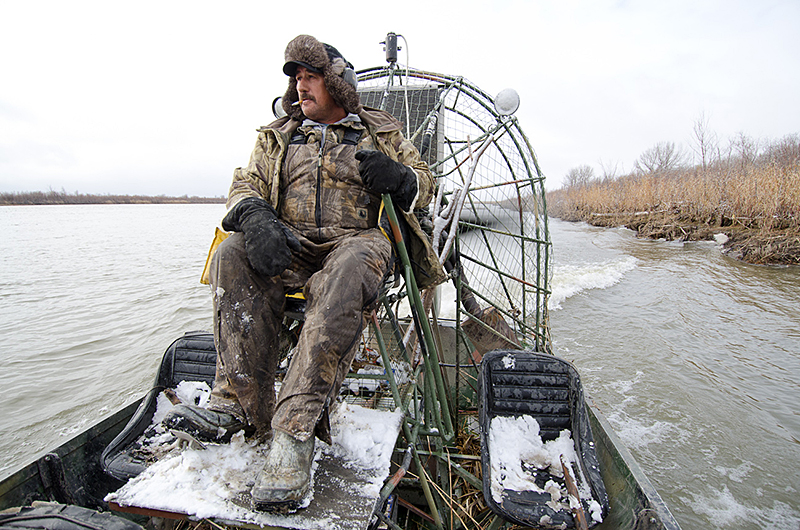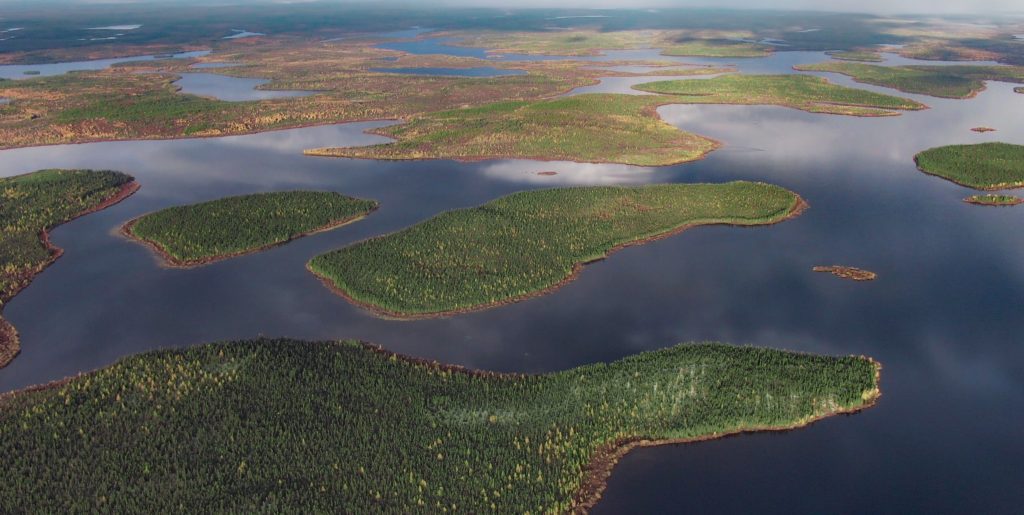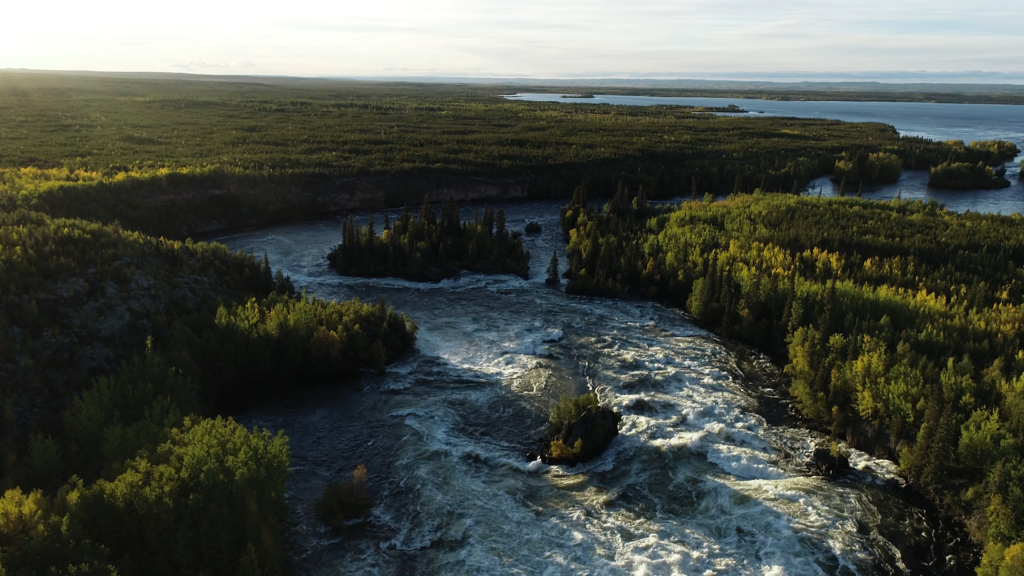Supporting Reconciliation through Conservation

By Esprit Farmer
It is important to remember that what we call home is the ancestral territory of the Indigenous People of Canada. The Numbered Treaties are integral to the relationship between Indigenous communities and Canada – and here in Saskatchewan, we live on Treaties Four, Five, Six, Eight, Ten (and smaller portions of Treaties Two and Seven). This is especially important to remember when we work with the land, not only for resource extraction, but also for conservation.
For many Indigenous Canadians, the land provides not only food and resources, but also a deep cultural connection. This inherent connection is expressed in the Lakota saying, “all my relations”, or Mitakuye-Oyasin. This signifies a link between individuals, the people around them, all of nature, and The Creator. It is a worldview where one’s actions impact everything around them and that everything has inherent value. This worldview, if integrated, would benefit many Canadian’s relations to nature.
Indigenous Consultation in Natural Resource Extraction
While Indigenous communities have an undoubtedly strong connection to the natural environment, this often leads to the misconception that they only want untouched wilderness. This is not entirely true. Natural resource extraction, such as forestry and mining, provides important economic opportunity and cultural development to some Indigenous communities.
Natural Resources Canada illustrates the benefits that mining can have for Indigenous communities. Especially further north and in rural communities, mining provides jobs and economic stability. This said, responsible and mutually beneficial operations are only possible when Indigenous Nations are meaningfully engaged in and consulted on development activities, as well as the potential risks associated. Likewise, Indigenous perspectives on conservation are necessary to remediate the land and minimize environmental damage.
Incorporating Indigenous views like ‘all my relations’ is necessary not only for cultural sustainability and reconciliation in Canada but also for environmental sustainability.
The Importance of Indigenous Protected and Conserved Areas
Indigenous Protected and Conserved Areas (IPCA) are a new and long-overdue aspect of Canadian conservation. IPCAs recognize that Indigenous Nations have been governing their territories since time immemorial and when it comes to managing their lands and waters, Indigenous communities play a fundamental role in conserving and protecting their local ecosystems. Indigenous peoples are heirs to thousands of years of sustainable management and by integrating Indigenous knowledge, laws, governance, and shared decision-making through IPCAs, better and more effective conservation efforts can be achieved, while moving forward toward reconciliation.
One example of a current IPCA project is Manitoba’s Seal River Watershed. Working to protect an area spanning 50,000 square kilometers, the initiative is led by four First Nations, engaging the Dene, Cree and Inuit communities living in and around the area. Read more about CPAWS-MB involvement in this conservation effort here.

Ya’Thi Néné as a Model for Indigenous Conservation in Saskatchewan
Ya’Thi Néné is a conglomerate organization formed by seven northern Saskatchewan communities and First Nations. They work to protect the Athabasca Basin environment and act as a mediator for all industry and government operations that take place near the Basin.
As Ya’Thi Néné works to form an IPCA in the Athabasca Basin, their partnership with CPAWS-SK, the government of Saskatchewan, and the government of Canada grow increasingly important. The Athabasca Basin is a key site for endangered caribou species. Caribou hold cultural and spiritual significance to the Denesuline and Athabasca communities and require large untouched swaths of land to survive. Because of their connection to the land, the local communities have the best understanding of the caribous’ needs and they are best equipped to protect them.
Learn more here about what CPAWS-SK is doing to protect caribou in the Athabasca Basin Woodland Caribou. Donate to continue the great work of Ya’thi Néné and CPAWS-SK in protecting this important area.



The Importance of Indigenous Governance
Indigenous governance is a cornerstone not only for reconciliation but also for conservation. This is due to the inherent stewardship that comes with self-governance: communities practice safe and environmentally responsible operations in order to guarantee the sustainability of their land for today’s benefit and the benefit of future generations
This is seen in the PA Grand Council (PAGC). This council is formed by twelve First Nations Chiefs in northern Saskatchewan. When considering the Indigenous connection to nature, the PAGC illustrates that in fly-in communities, food sovereignty and living off the land are quintessential. This increases resilience during natural events like road flooding and unexpected circumstances like pandemics when access to imported goods can’t be relied upon.
Because of this inherent connection and reliance on the land, sustainability is paramount. This lies at the root of the Metis Nation-SK and the Government of Canada Memorandum of Understanding, signed in 2010. This memorandum focuses on the importance of traditional hunting practices and Indigenous rights to the land. This is an important step for reconciliation, as Metis people practice self-governance and increase local resilience. It is also incredibly important from an ecological perspective: traditional harvesting methods use fewer resources and rely on the quality and health of the land.
In recognizing the importance of Indigenous-led conservation, CPAWS-SK has been working with members of Cumberland House Cree Nation to conserve the Saskatchewan River Delta. The Delta has supported Indigenous people for thousands of years. Generations of knowledge have been passed on, allowing integral relationships with the land to perpetuate. Although the Delta continues to allow these relationships to persist, locals have noticed that the water and the wildlife are suffering, subsequently changing many people’s way of life. Upstream projects such as hydro and coal mining have cumulative downstream effects which are felt by the people and the ecology of the land.



Clearly, Indigenous perspectives are a cornerstone to Canada’s relationship with nature. This is why CPAWS-SK values its Indigenous partnerships. Together, we are working towards reconciliation and conservation of Indigenous lands.
Resources:
About Prince Albert Grand Council (PAGC)
Aboriginal Participation in Mining | Natural Resources Canada
“All my Relations” teachings and meanings
Environment and natural resources for Indigenous peoples | Government of Canada
Lands and Resources | Métis Nation Saskatchewan
Negotiation of Aboriginal Self-Government
The Seal River – Canadian Parks and Wilderness Society
Tribal Parks and Indigenous Protected and Conserved Area Lessons Learned from BC examples
